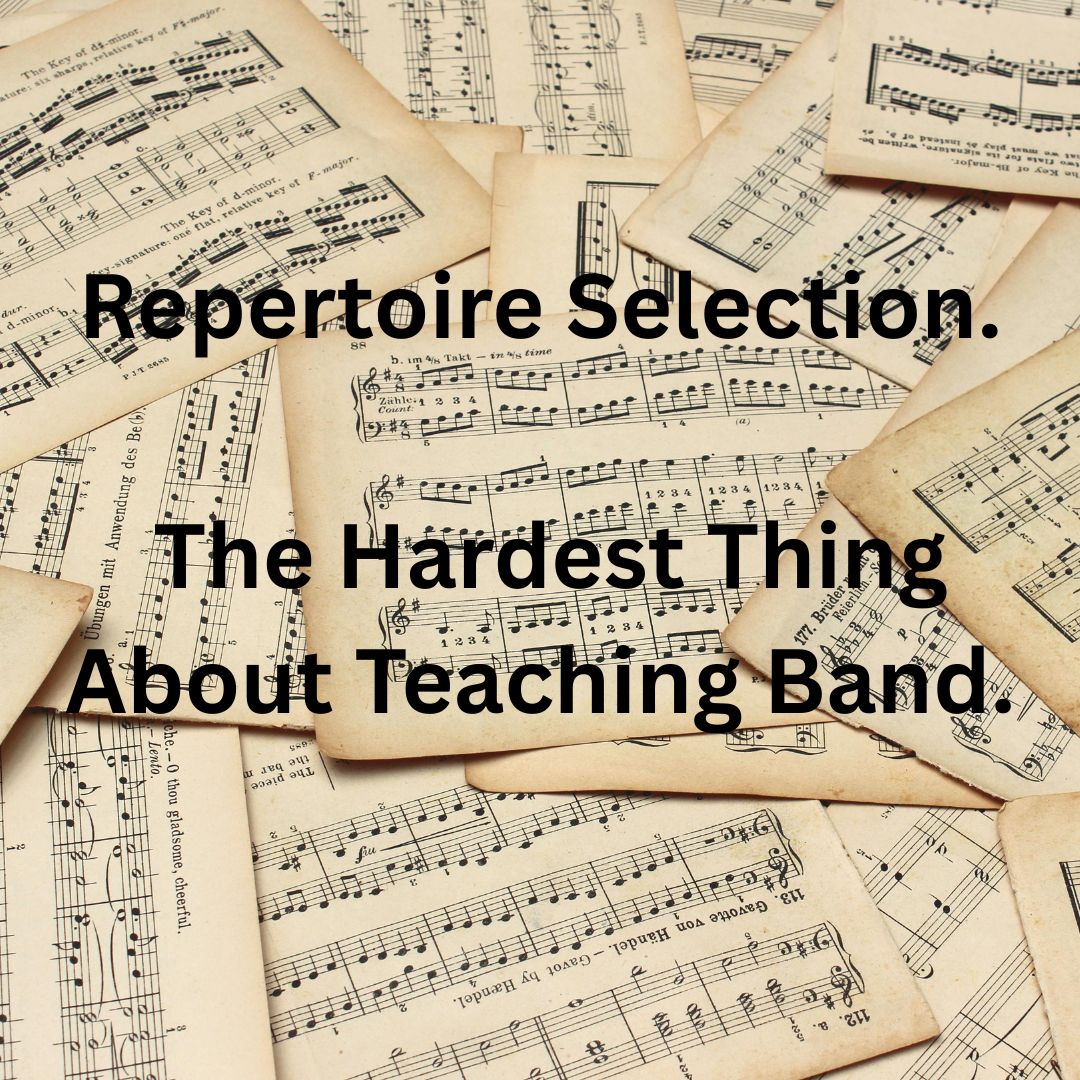Repertoire selection can make or break your performance! It can affect student focus, enthusiasm, motivation, and it can even affect your classroom management. Repertoire selection can help musicianship or it can hinder musicianship. If the students are too focused on technique and getting the right notes, they’re not going to be focused on musicianship. It’s better to find a piece that they can play musically. Some tips…
Sight read to the point of silliness
If you have a large enough library, pull out pieces frequently for the students to sight-read. You may be surprised at what works and what doesn’t work, but you’ll never know if you don’t try. I often have 3-4 times the amount of music we need for our next concert in the folders. When I have inherited programs, I’ve pulled out music of all levels to sight-read simply because I don’t know what level the students are at.
Having the folders stuffed makes it easier when the time comes to add or drop a piece; you already have others to go to.
Younger students often are not able to envision what they are capable of and will dismiss a piece that’s too hard before even working on it. Keep it in the folder and introduce it in short bursts – maybe even playing a professional recording of the piece.
Older students sometimes dismiss a piece because it’s “too easy.” We will sight-read it and it ends up a train wreck. It becomes a teaching moment when we talk about how the individual parts may be easy, but when we put it all together it’s more difficult.
Don’t be tempted to always play that jewel you loved in college. Many college bands are full of music majors who love and want to be there practice two or three hours a day. That’s not your typical 6th grade or even high school band!
Score Study
It’s important! Realize your limitations. I’ve had clinicians say “You should spend 4 hours in the score for every hour of rehearsal.” That sounds great! I’d love to do that. Then they confess that class only meets 2 times a week and it’s their only class, or one of 2 classes. Most of us don’t have that luxury. Spend thoughtful time studying the score.
Consider instrumentation
In some of my early jazz bands, I had limited or incomplete instrumentation. I would pull out what I call “Wall of Sound” arrangements. These had the trombones, trumpets, and saxes playing the same thing.
Consider ranges, abilities, and size of your group
More advanced songs usually would not work if you only had one clarinet player. But then again, if you have a super strong all-state clarinet, then maybe it’ll work! One year I did a piece with that one clarinet player. We rocked it! The band scored a Superior at festival. Two years previously, I had challenged that same group (my first year there) with a Grainger piece that was way too difficult. They had never been to festival, froze on stage, and scored a 4. I learned from that and never made that mistake again.
Don’t be afraid to quit a piece
Sometimes we program a piece thinking it’s going to be great. We start working it and feel committed because we are halfway to perfecting it. Don’t be afraid to quit! Maybe it’s worth practicing but not performing, just so students get exposure to it. At other times you may decide to perform a piece at a regular concert but not at festival.
Getting a good handle on repertoire selection takes some experience. Hope these tips have been helpful.
James is retired from full time teaching. He has served private, suburban, and Title 1 schools and now teaches half time at a charter school. Find out more about James at www.jamesdivine.net Subscribe to his podcast Almost Everything I’ve Learned About Teaching Band.
Have you ever wanted to teach improvisation to ALL students but you weren’t sure how? Check out www.jazzfromthestart.com for a curriculum to teach improv as soon as students know 5 notes.
Pre-order a copy of my latest book, Almost Everything I’ve Learned About Teaching Band coming out June 2025.
